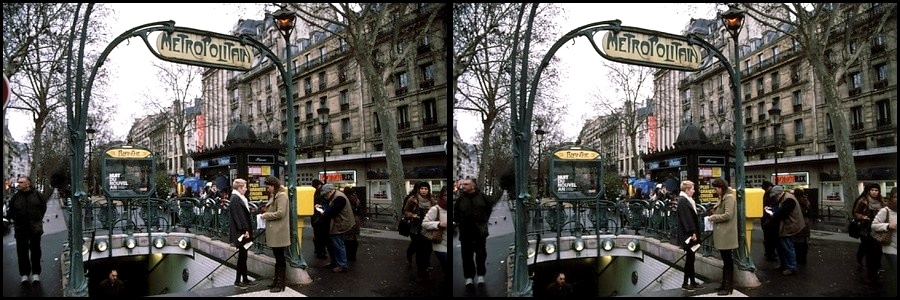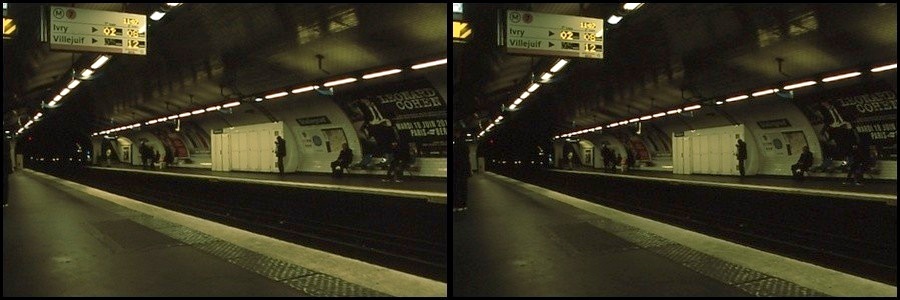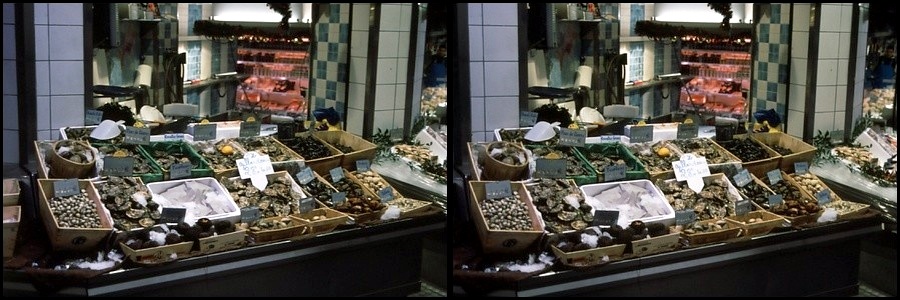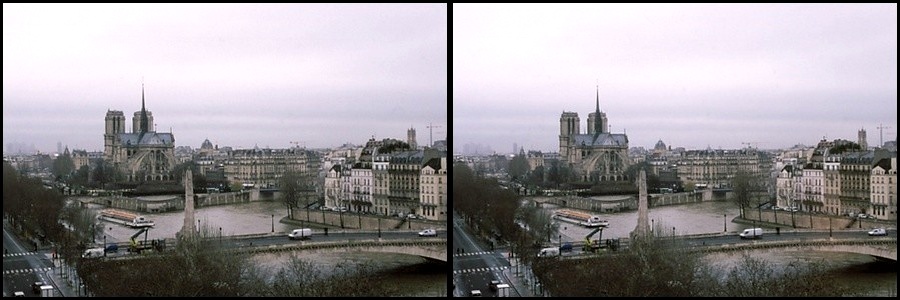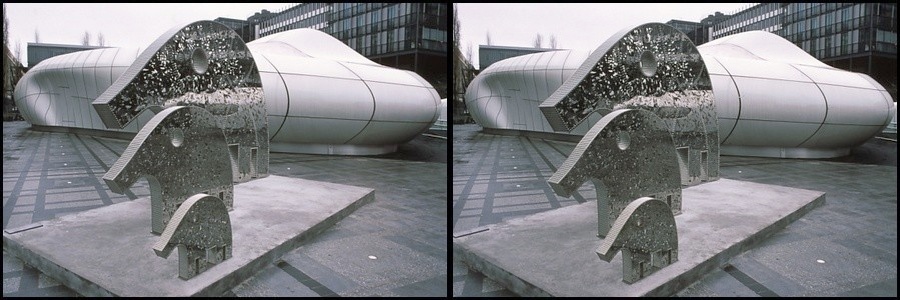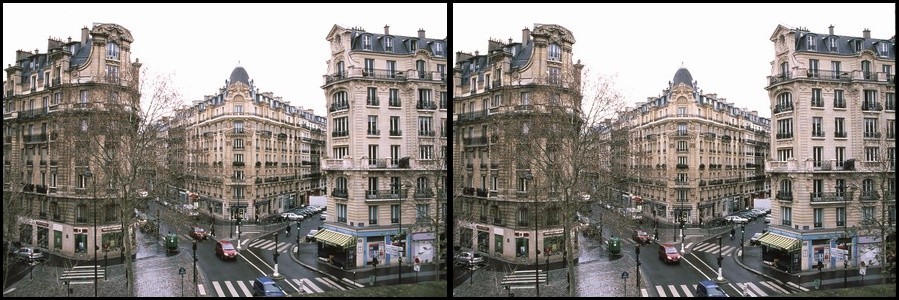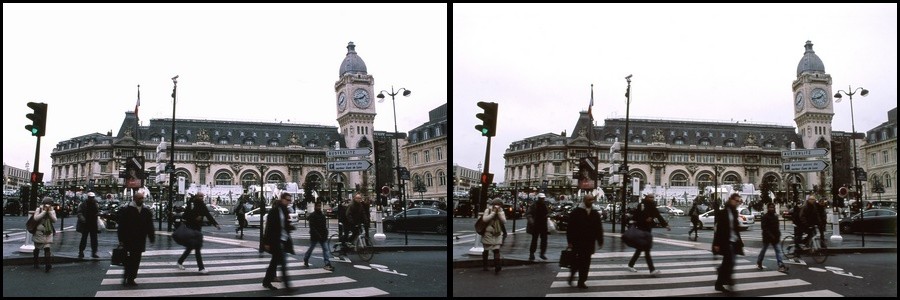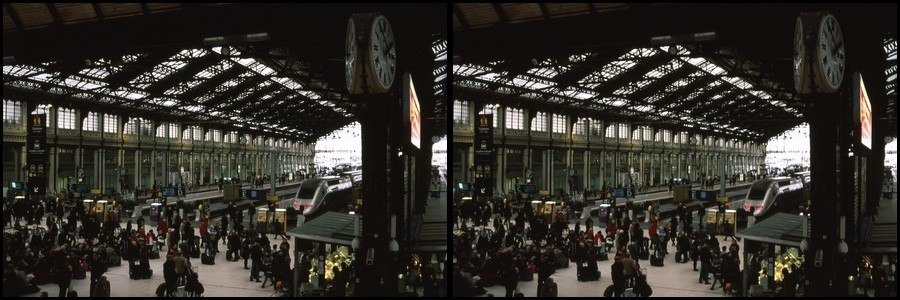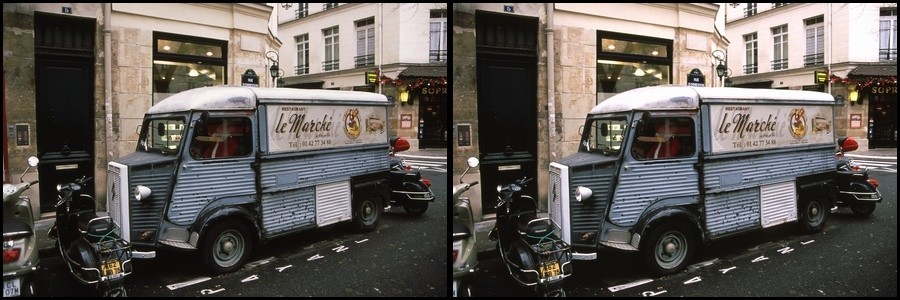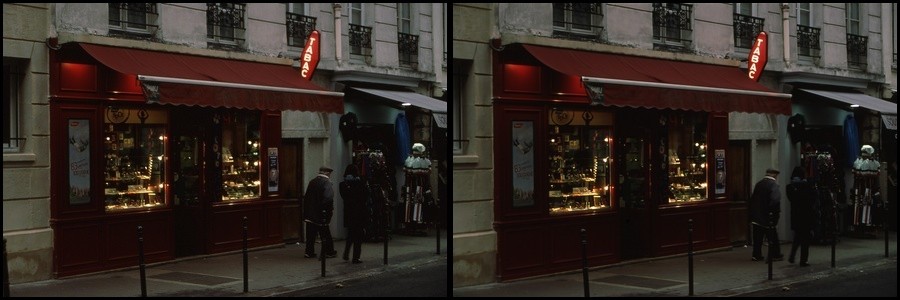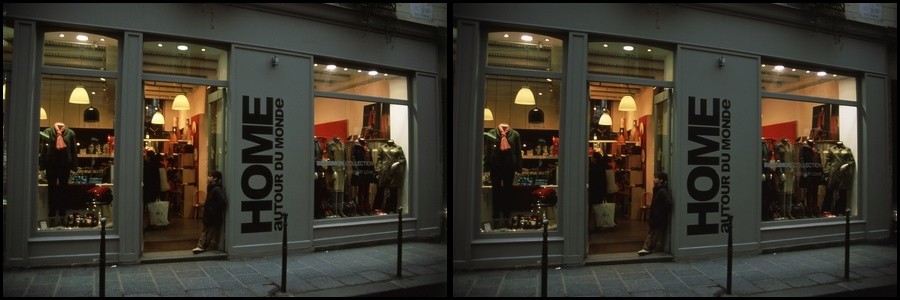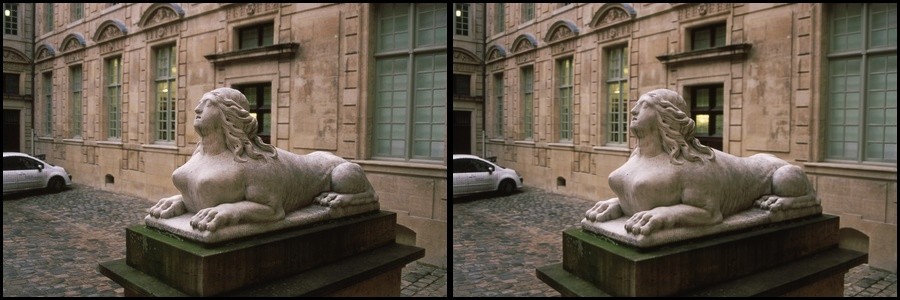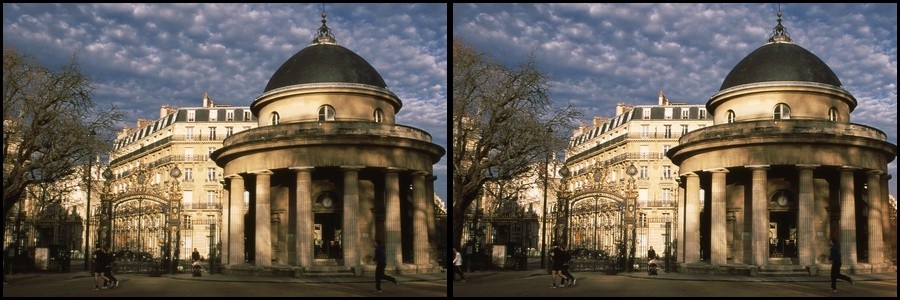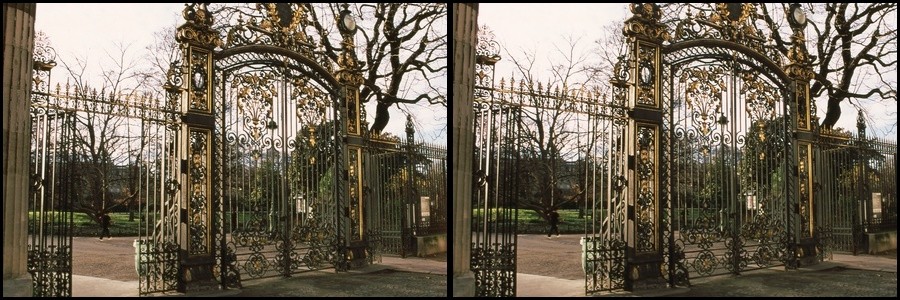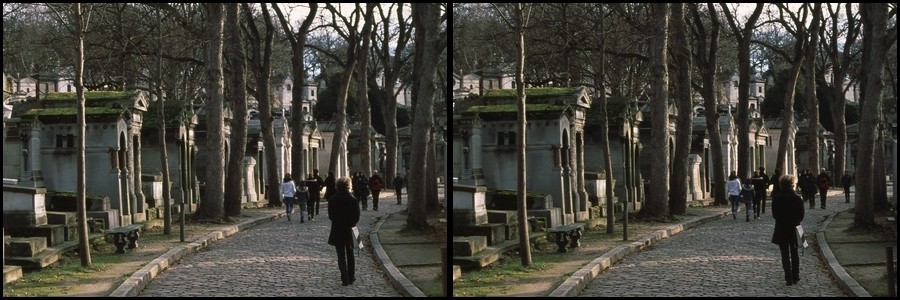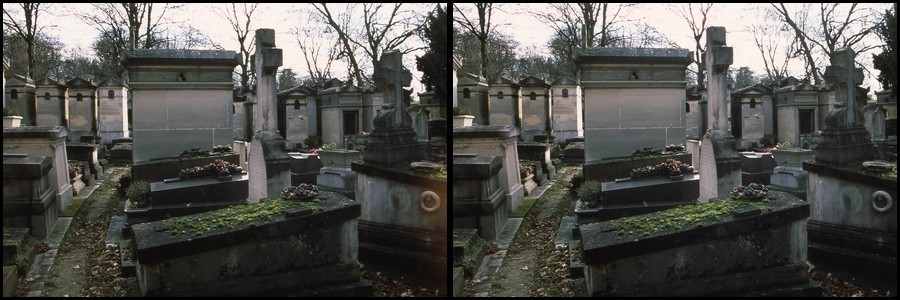Stereo SLR with Pentax K
mount (2012)
Stereo
Photography is a fascinating subject – and I am just
scratching
the surface so far, despite the fact that my own stereo camera Dacora
Dignette
Stereo produced fine pictures right from the beginning.
What I
didn’t like is that I lost both the meter and the rangefinder
function due to some “accidents” during the making.
While it
would have been possible to correct this with another go at two
more cameras (and no accidents), there is also the fact that the Dacora
lenses
are not quite as good as I had expected. I remembered them to be quite
impressive, but this was maybe just my glorifying memory, the first
slides were
a little dull indeed and more modern lenses definitely perform better.
So, even
if for a rangefinder of the sixties the lenses may be alright,
better is the enemy of good…
On top of
that, 45mm as the only focal length is too long for my taste
anyway.
Since I like the
RBT cameras very much, the next
DIY project
came around: A Stereo SLR with Pentax K mount (there are still a couple
of
Pentax lenses in the cabinet, even two 28mm).
I would
have preferred to use two genuine Pentax bodies, but their
shutter layout turned out to be too wide to achieve the desired stereo
base of
75mm. I especially looked at the MX (that would have been nice!), but
the MX is
absolutely cramped with mechanics; nothing can be sawed off there
without also
taking away the camera function.
I went for
a base of 75mm, to be able to stay with the original 24x36
format and not to waste too much film. 75mm may be a little wide in
theory, but
I meanwhile believe that this has not much of an effect for everyday
photography.
Apart from
Pentax cameras, there are many other camera bodies around
with Pentax K mount, from various brands, but many of them immediately
disqualify as being too wide. RBT used the Cosina C1 body (among
others),
closely related to the Voigtlaender Bessa cameras and this is what I
eventually
also did.
The Cosinas are very
straightforward cameras, no mechanical marvels, but
their construction is pretty logical and they are easy to dismantle.
Actually,
I cannot remember a single camera that looked so “neat and
clean” inside –
kudos, Cosina!
Below picture shows both
halves after cutting the “donor” cameras in
two:
And after glueing them
together:
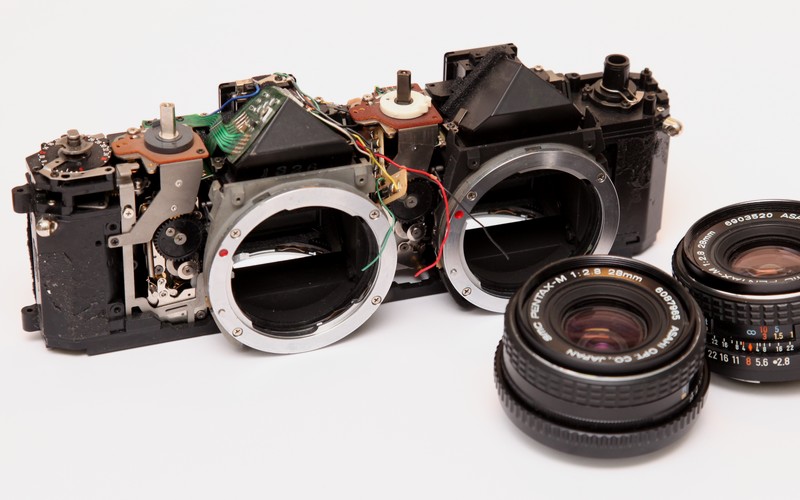
As for
engineering skills, RBT demands greatest respect. I haven’t
even
held a RBT, nor used or seen its innards, but they actually offered
such a
camera for the full 24x36 format with a stereo base of 65mm. How on
earth they
succeeded to move those two cameras closer to each other yet
another
centimetre (and keep the function!) is beyond me.
The RBT
cameras also have all functions integrated, i.e. film transport
and shutter tensioning is done with one
lever, only one release button
releases both shutters and only one
dial is used to time both shutters – very impressive.
Transporting
the film as such is a simple task, since the camera only
uses one film. Establishing the
correct positions is more difficult: stereo pairs are exposed at the
positions
1/3, 2/4, 5/7, 6/8 and so on, and RBT cameras are able to control this,
but my
camera does not (and I also don’t know how RBT did it). On my
camera, the film
needs to be transported to the correct positions marked on the frame
counter,
with the brain switched on, no beeps or flashing red lights will warn
if this is
not done correctly.
The shutter of the
neighbouring camera is cocked via a flat piece of
aluminium on the underside of the camera, and I assume that RBT did it
the same
way, since their camera also has a doubled-up bottom cover, just like
mine.
To trip the shutter with
only one button I have manufactured a small
cable pull, with one redirection, to gain some cable travel.
I
wouldn’t be surprised if RBT had followed the same principle,
but I
don’t know.
RBT
cameras also have only one shutter speed dial – and I again
have no
clue how RBT has managed to also operate the other shutter with this
dial. My
camera has two dials and that is also sufficient, I believe. Stereo
Photography
is “slow food” anyway, so investing that little
extra effort to check both
shutters are in line should be possible.
I have
also decided to remove the prism of the “second”
camera. While it
is nice to see through both finders at the same time and preview the
stereoscopic effect, the second prism adds weight, and I also liked
the
idea of having an asymmetric camera.
Here you can see the top and
bottom covers before painting:
And this is the finished
camera:
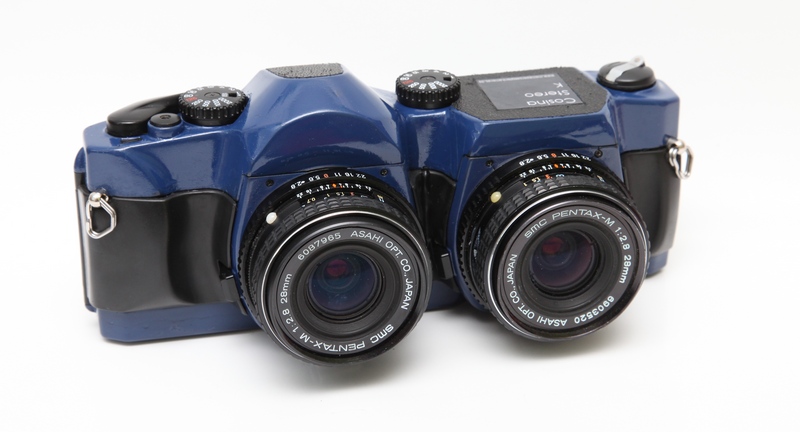
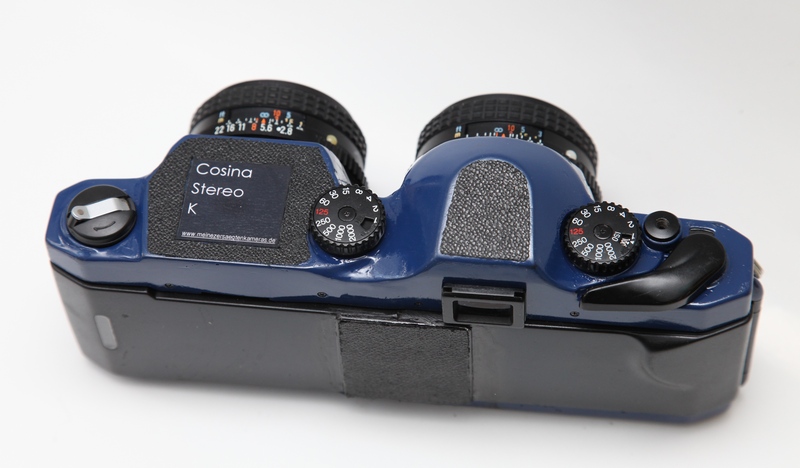
Coloured
cameras are en vogue…
The
paintwork is awful, this is something I am just not good at, but I
promise to try and redo it some day.
Technically,
the camera works well, including the cable pull shutter
that I first didn’t believe in.
The first
stroke of the lever cocks both shutters and transports the
film by one frame. Depending where you are on the film, up to two more
strokes
are needed to transport the film to the next marked position on the
frame
counter, to be ready to expose the next stereo pair.
Metering
is unchanged as compared to the original camera, with LEDs in
the finder, as well as focusing. The set values have to be transferred
to the
other camera. I will maybe also try and couple some zoom lenses, but
until then
this is sufficient.
The first
film showed some light leaks, that I have to find and stuff
now (I have an idea of where to look already). The exposure of both
cameras is
somewhat different, but that I also attribute to the light leaks, until
proven
otherwise.
Some pictures from
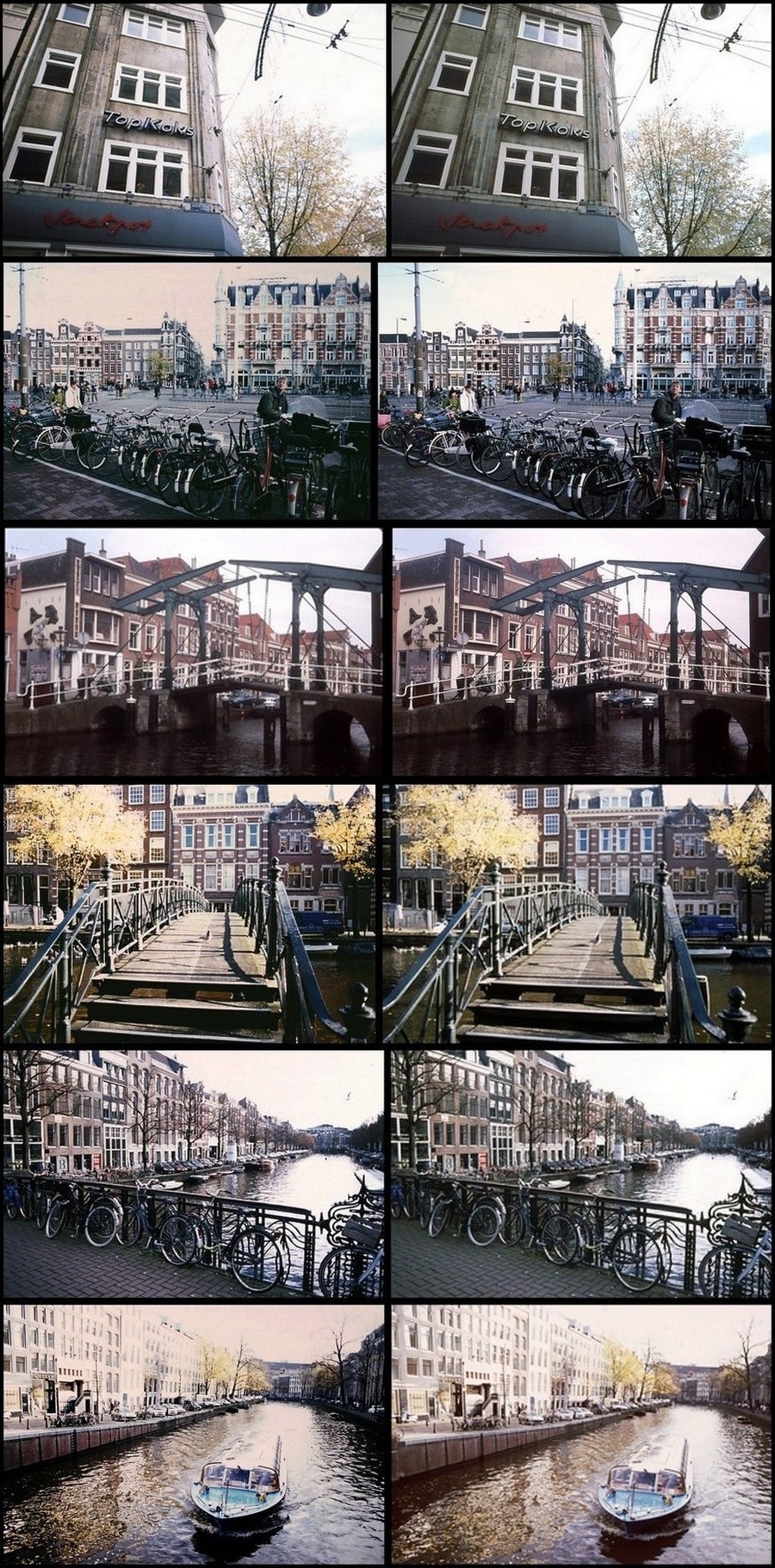
The different
exposure on some of the frames was caused by the slow
aperture on one of the 28mm lenses (a common Pentax fault...).
Meanwhile the light leak has been found and the camera is
now equipped with two coupled FA 28-80 lenses, which doesn't
make
it any prettier but much faster to handle:
First snow 2012:
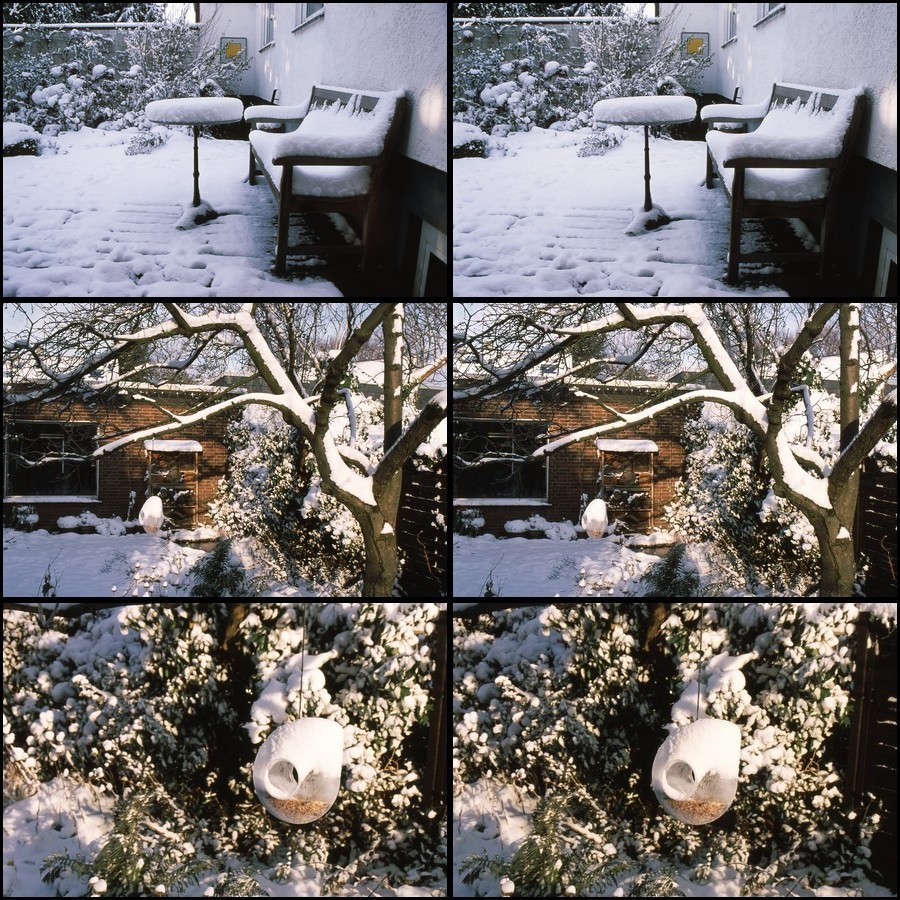
Pictures
from Paris:
